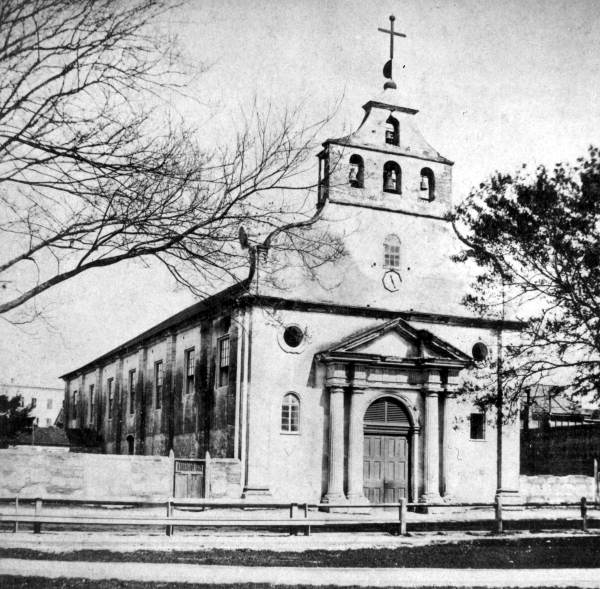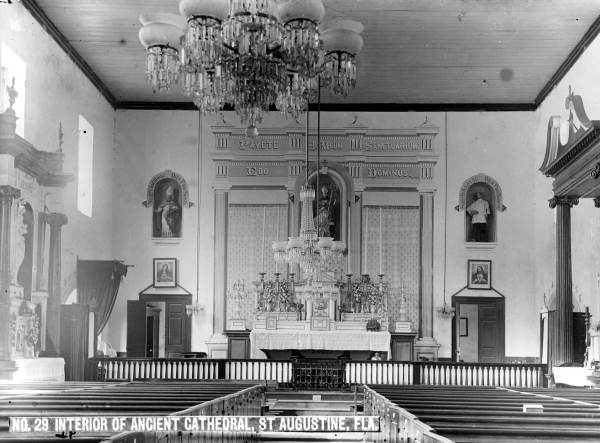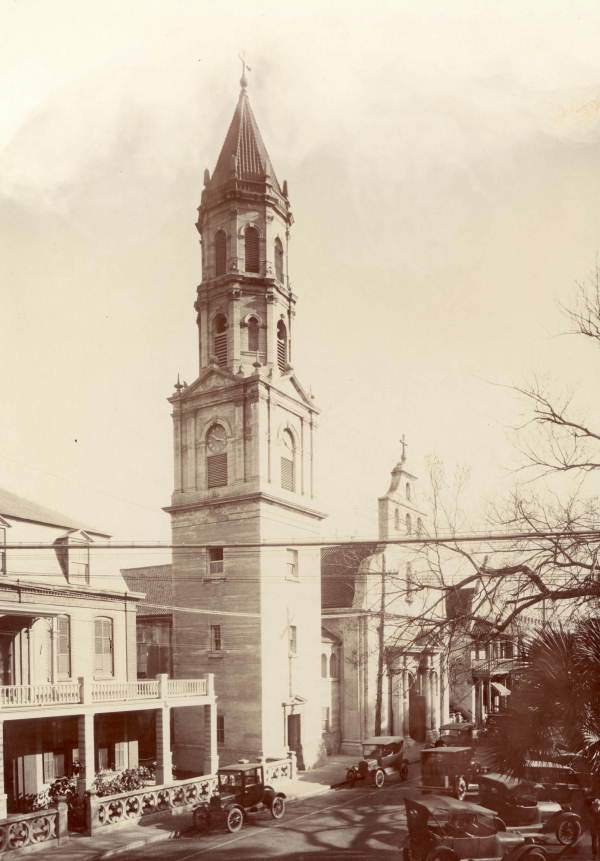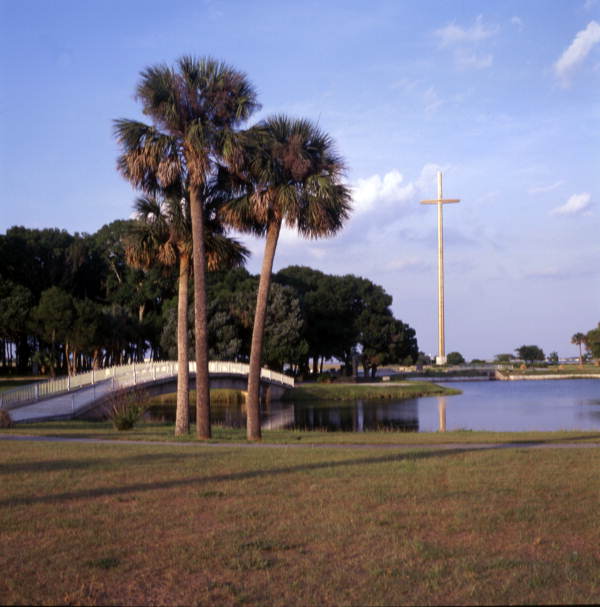Description of previous item
Description of next item
The Cathedral Basilica of St. Augustine
Published July 7, 2014 by Florida Memory
Every Sunday, worshipers belonging to the oldest Catholic parish in the United States file into the St. Augustine Cathedral Basilica, where mass has been celebrated in some form or fashion for nearly 450 years. As timeless as this sturdy building may appear to the visitor, however, its history bears witness to many instances of warfare, disaster, and change that have shaped the city of St. Augustine.
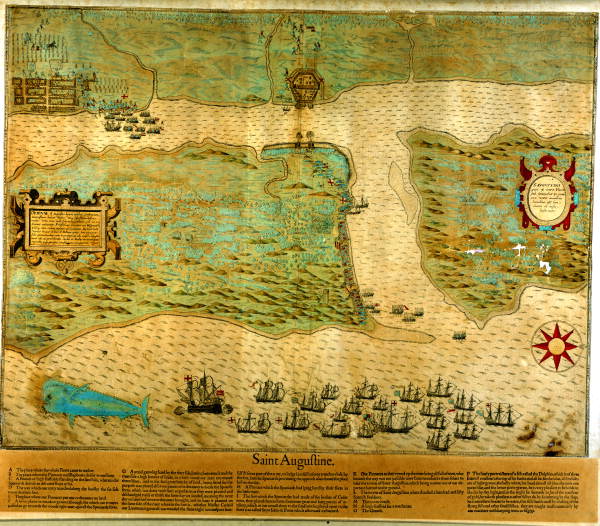
This engraved, hand-colored map drawn by Baptista Boazio in 1589 depicts a raid on St. Augustine by the English navigator Sir Francis Drake. Boazio lived in London from about 1585 to 1603, illustrating accounts of English expeditions and campaigns.
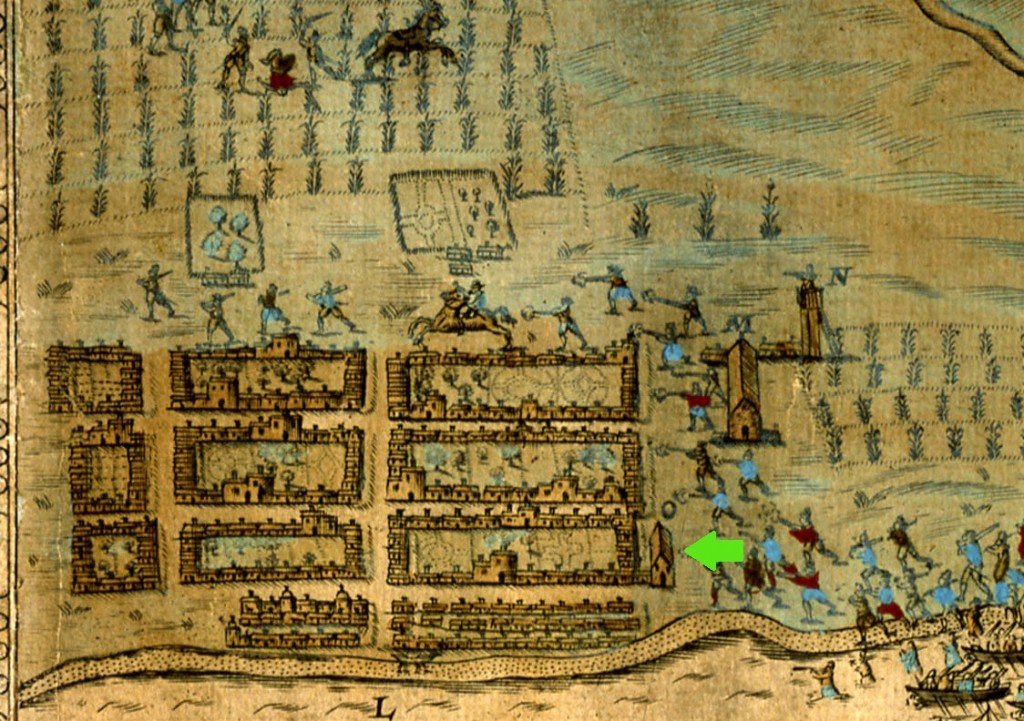
In this zoomed portion of the Boazio map, notice the location of the parish church, marked “O” in the original and indicated with a green arrow.
St. Augustine was established in 1565 by Don Pedro Menendez de Aviles. He had carried with his expedition four priests who immediately began preparing to minister to the Spaniards who would settle in the new outpost. The map above shows the location of the first parish church at the southeast corner of the old plaza.
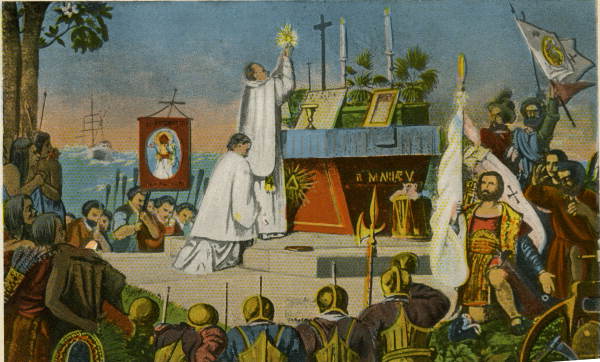
Depiction of the first mass celebrated in St. Augustine on September 8, 1565. This painting, dated 1919, is an exact copy of the version that hung on the wall of the St. Augustine Cathedral for many years before the building burned in 1887.
In addition to serving as the principal port and administrative center of Spanish Florida, St. Augustine was also the headquarters of the Catholic Church’s effort to minister to the Native Americans living in the surrounding area. Two lines of Franciscan missions extended outward from the town, one heading west as far as Tallahassee, and another stretching into present-day South Georgia as far as St. Catherine’s Island.
The original parish church was burned in 1586 when the English navigator Sir Francis Drake attacked St. Augustine. The citizens rebuilt the church, but it was destroyed again in 1702 during a raid led by colonial governor James Moore of South Carolina. For several decades afterward, mass was celebrated in the chapel of La Soledad Hospital.

Map depicting parts of Florida and Georgia in 1806. Note the lines of small settlements extending outward from St. Augustine to the west and north. See the map’s catalog record for more information.
Ironically, the arrival of the largely Protestant British breathed new life into the Catholic culture of St. Augustine. When British planter Andrew Turnbull’s workforce of Minorcans, Italians, and Greeks became dissatisfied with their situation, they march northward from New Smyrna Beach to St. Augustine, where many of them stayed. The presence of so many practitioners of the Catholic faith in the city rekindled interest in building a parish church. The return of the Spanish to Florida in the 1780s helped as well. In 1786, the Spanish Crown ordered that a new parish church be built, and construction was underway by 1792.
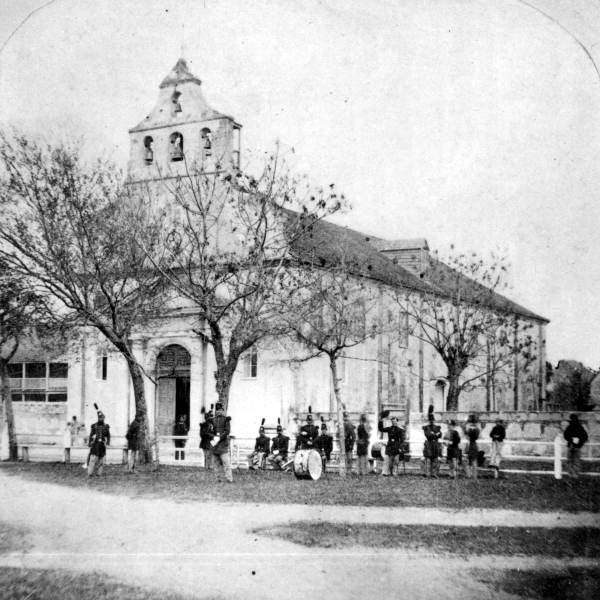
A military band gathered outside the St. Augustine Cathedral during the Civil War (circa 1861-1865).
More than five years went into building the new structure. It was of Spanish design, completed in August 1797, and dedicated during the Feast of the Immaculate Conception the following December. For nine decades, this building served the growing community, and was elevated by the Pope to cathedral status when the Diocese of St. Augustine was established in 1870. A disastrous fire in 1887 nearly destroyed the cathedral, but the coquina and cement walls withstood the blaze. When a new cathedral was built, the architects utilized the old walls and changed very little of the building’s structure, aside from adding a new bell tower and transepts.
The cathedral received its most recent renovation in anticipation of St. Augustine’s 400th anniversary in 1965. As part of the project, the church erected a 204-foot “Beacon of Faith” that is visible from miles away. On December 4, 1976, Pope Paul VI elevated the cathedral to the status of minor basilica. Today the basilica remains an impressive edifice, a stately place for worship, and a popular site for visitors to imbibe the rich history of St. Augustine.
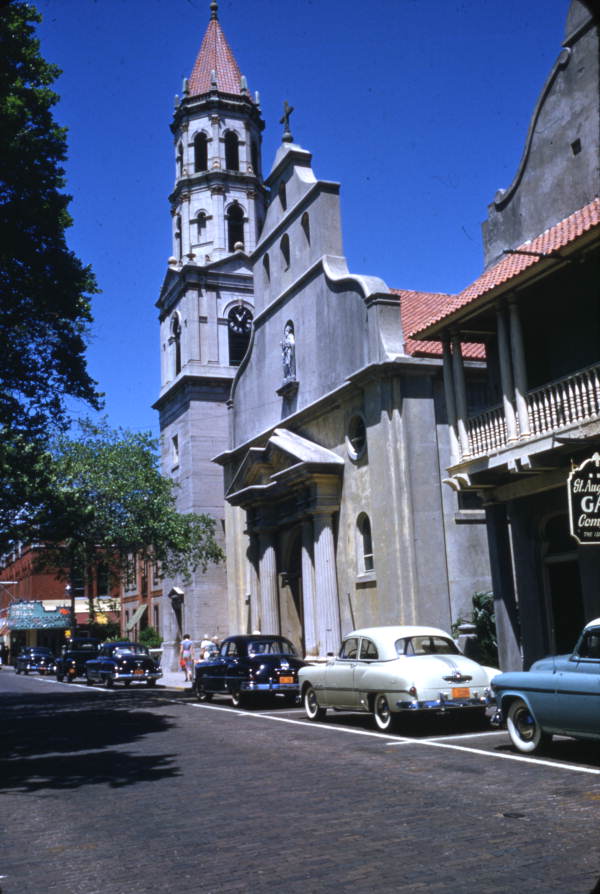
A more modern view of the Cathedral Basilica of St. Augustine, captured by photographer Joseph Steinmetz (1953).
Find more photos of St. Augustine in the Florida Photographic Collection.
Cite This Article
Chicago Manual of Style
(17th Edition)Florida Memory. "The Cathedral Basilica of St. Augustine." Floridiana, 2014. https://www.floridamemory.com/items/show/295190.
MLA
(9th Edition)Florida Memory. "The Cathedral Basilica of St. Augustine." Floridiana, 2014, https://www.floridamemory.com/items/show/295190. Accessed January 1, 2026.
APA
(7th Edition)Florida Memory. (2014, July 7). The Cathedral Basilica of St. Augustine. Floridiana. Retrieved from https://www.floridamemory.com/items/show/295190

 Listen: The Assorted Selections Program
Listen: The Assorted Selections Program